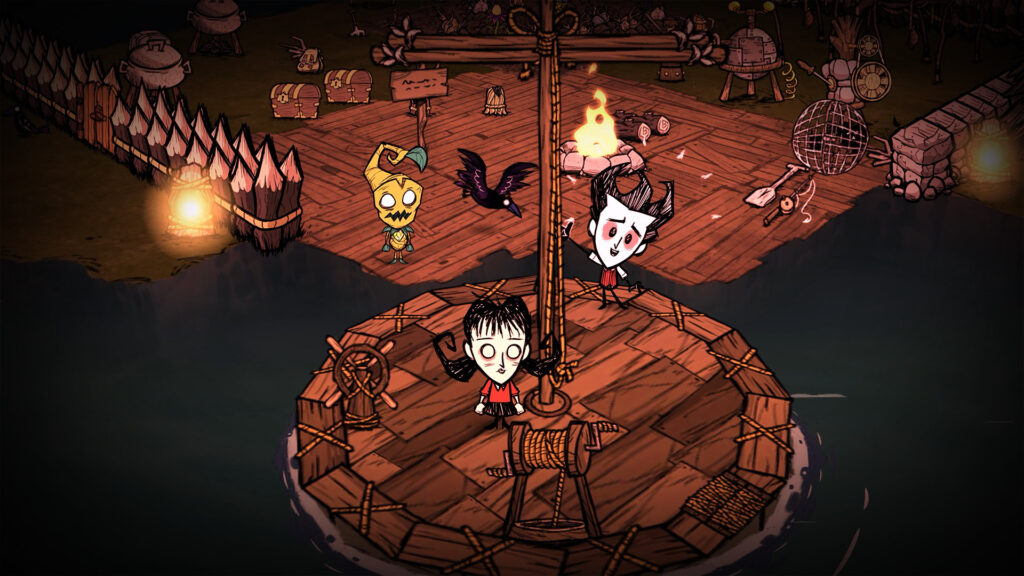Don’t Starve Together (DST) is a multiplayer survival game where players must work together to fend off dangers in a dark and whimsical world. With various characters, biomes, and monsters, mastering this game requires strategic planning and knowledge. This article will provide essential tips and guides to help you survive the treacherous environment of Don’t Starve Together.

Understanding the Basics of Survival
Survival in DST hinges on understanding its core mechanics. Players must gather resources, manage their hunger, and protect themselves from the harsh environment. The game operates on a day-night cycle, where daytime is the best time for exploration and resource gathering, while nighttime presents significant dangers.
One of the first things players should do is collect bamboo, twigs, and grass. These materials are essential for crafting tools, building shelters, and starting fires. A campfire is crucial for survival, providing light and warmth during the night.
Choosing the Right Character
Each character in DST has unique abilities that can significantly impact gameplay. For new players, characters like Wilson, who can grow a beard for warmth and create useful items, are ideal. Other characters, such as Willow, can light fires easily, which can be beneficial in the game’s early stages.
Understanding character strengths and weaknesses is vital for team composition. Players should communicate and select characters that complement each other’s abilities to ensure a balanced team dynamic.

Crafting Essential Tools
Crafting is a central mechanic in DST, allowing players to create tools, weapons, and structures essential for survival. The first tools players should craft are an axe and a pickaxe. These tools will help gather resources more efficiently.
Players can also create a science machine, which unlocks advanced crafting recipes. Focusing on building a base early on is essential. Setting up a base with farms, storage, and drying racks can significantly improve resource management and sustainability.
Establishing a Base
Finding the perfect spot to build a base is crucial. Players should look for locations near key resources like bunny burrows, beefalo, and ponds. A central location allows easy access to different biomes, making resource gathering efficient.
Once a suitable location is found, players can start by building a fire pit for a permanent cooking source and light. Walls can also be constructed to protect from enemies and provide a safe area to store supplies.

Food Management Strategies
Managing hunger is a key component of survival in DST. Players should focus on gathering various food sources, including berries, carrots, and meats. Cooking food not only improves its nutritional value but also prevents spoilage.
Building a farm allows players to grow food consistently. Players should prioritize crops like berries and vegetables that yield high returns. Utilizing drying racks to preserve meat and create jerky can also provide a sustainable food source.
Dealing with Monsters
Monsters pose a constant threat in DST. Players must be vigilant, especially during the night when certain creatures emerge. Understanding the different types of monsters, like hounds and spiders, is crucial for survival.
Players can build traps and fortifications to keep monsters at bay. Utilizing weapons and creating a plan for combat is essential when facing more dangerous foes, such as Treeguards or the Dragonfly.

Understanding Seasons and Their Impact
DST features a seasonal system that affects gameplay. Each season brings unique challenges, such as winter, which requires players to manage warmth, and summer, which necessitates cooling strategies.
Preparing for the seasons involves crafting specific gear, such as winter coats and straw hats, to withstand temperature fluctuations. Players should gather resources in advance to avoid panic during seasonal transitions.
Collaborating with Friends
Playing with friends enhances the DST experience. Teamwork is essential for survival, allowing players to divide tasks and strategize effectively. Communication is key; players should share resources and discuss survival strategies.
Creating roles within the group, such as a designated gatherer or builder, can streamline tasks and ensure that everyone contributes to the team’s survival. Regular meetings to discuss progress and plans can foster better collaboration.

The Importance of Exploration
Exploration is vital in DST for finding valuable resources and discovering new areas. Players should venture into different biomes to gather unique materials and discover new creatures.
Building road networks can enhance travel efficiency between key locations. Using pigs, bunnies, and other NPCs can provide assistance and trade options during exploration, enriching the overall experience.
Continuous Learning and Adaptation
The world of Don’t Starve Together is ever-changing, requiring players to adapt their strategies continuously. Regularly updating knowledge about character abilities, enemy behavior, and crafting recipes can enhance gameplay.
Players should be open to experimenting with different strategies and approaches. Online forums and guides can offer valuable insights and tips from experienced players, helping newcomers learn and improve.
Conclusion
Surviving in Don’t Starve Together requires a mix of strategy, teamwork, and adaptability. By following these tips and guides, players can significantly enhance their gameplay experience and increase their chances of survival in this captivating world.


